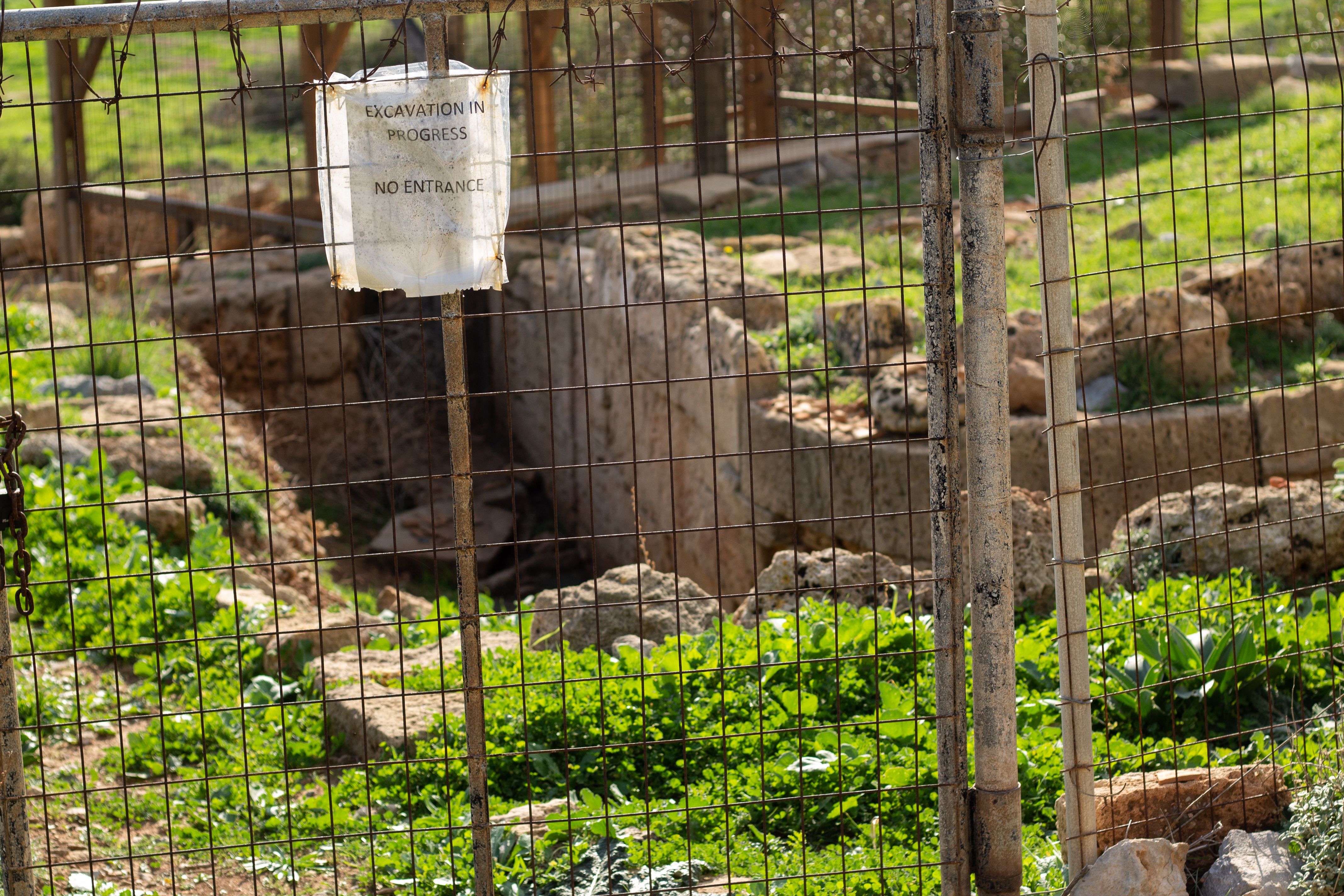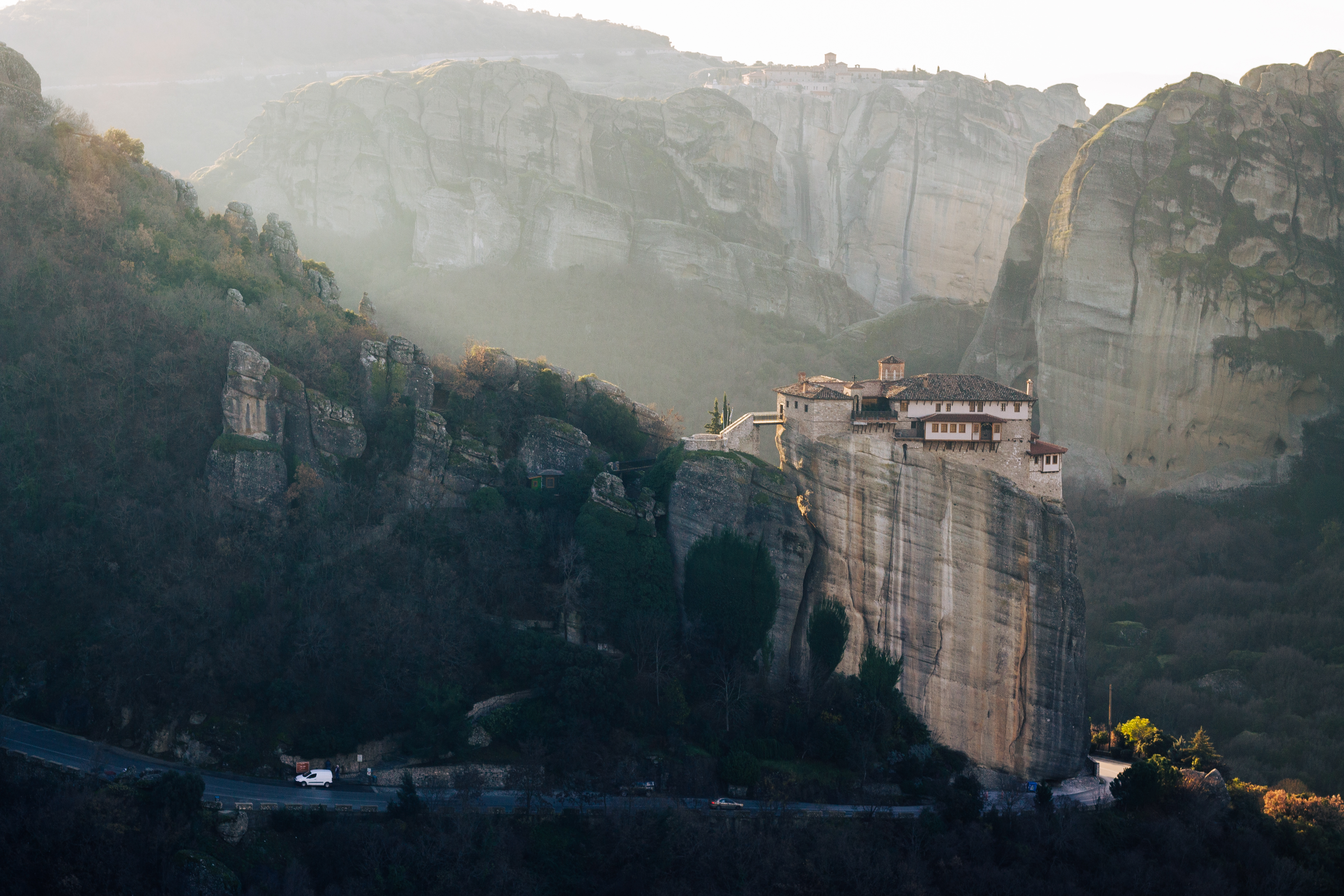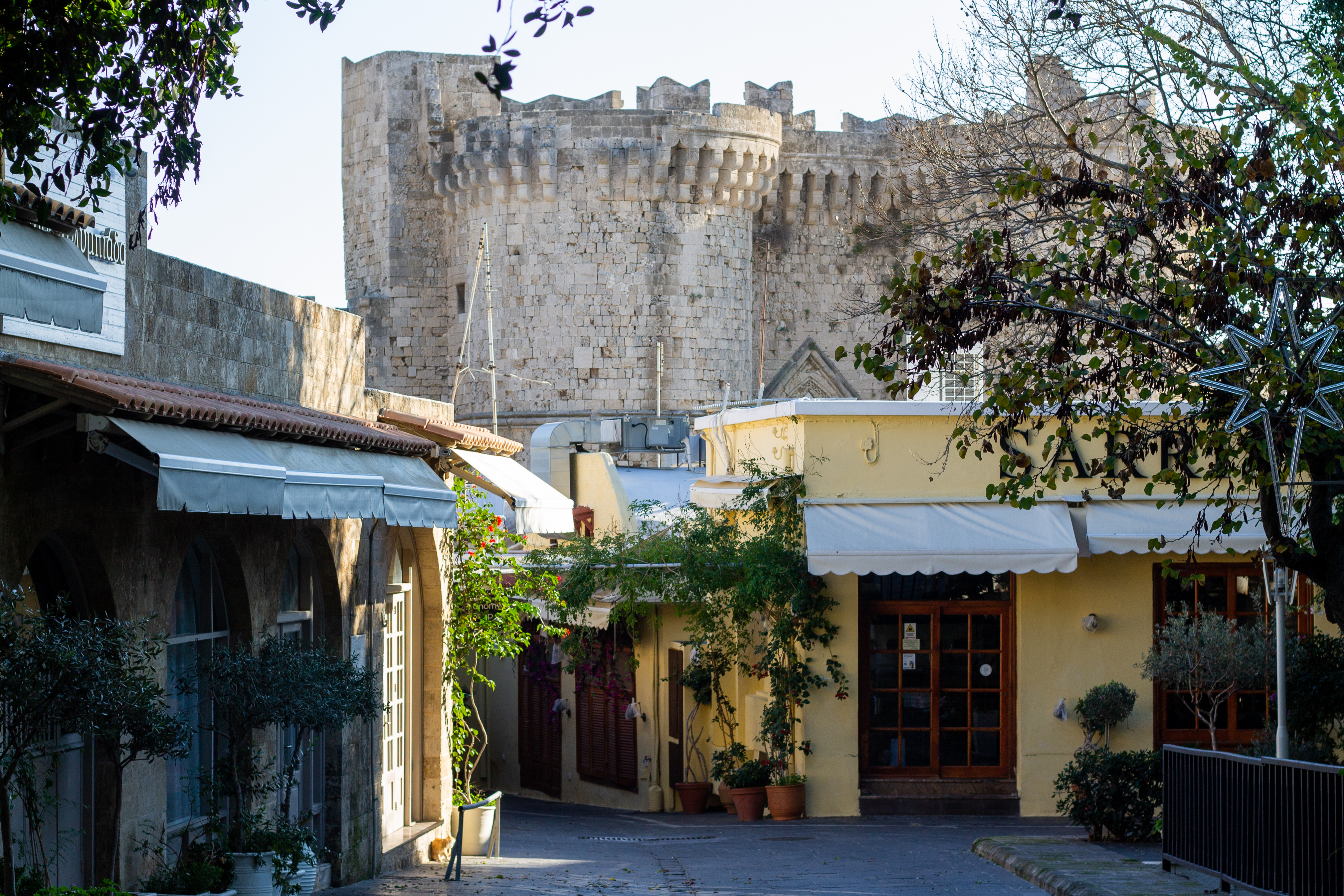Greece was at the top of my list of countries to visit in Europe. I love history, archeology, old stuff, and obviously architecture. Greece has it all and because we were going in winter, we were not going for its beaches. Our goal was to really experience Greece and to see as much of its history as possible. We avoided the honeymoon spots of Mykonos and Santorini, and instead visited Crete and Rhodes. Wherever you find yourself, there is an archeological site nearby and we fully took advantage of having a car, which allowed us the freedom to go where we wanted. We visited about 17 sites and because it was low season, there were hardly any crowds. It was a fantastic time to go to Greece and I would recommend Decmeber/January for anyone who was interested.
These are the Historical sites we visited:
Acropolis of Athens
The main draw for in my desire to go to Greece, everything else was a bonus. My first view of it was when we got to the hotel room and went out onto the balcony and looked right. Dominating the skyline, I couldn’t believe its scale. The acropolis is huge, and it’s a sheer cliff whose top doesn’t seem possible to reach. Of course you can, and on our second day we visited it as soon as it opened. We went in through the side entrance, which was recommended to us as the best way to go because you get to see the ancient theater and pass through some sites that you wouldn’t otherwise see. Because it was between Christmas and New Years, most of the tourists were Greek. As Athens is pretty much the only large city, it’s where a lot of Greeks spend their winter vacation/holidays.
In Ancient Greece, the acropolis was a citadel or fortified part typically built on a hill. The acropolis of Athens became a religious center dedicated to the goddess Athena (wisdom and strategy). The Parthenon is the one temple everybody knows and it’s the main structure sitting atop of it (not to be confused with the Pantheon, which is the domed structure with a hole in Rome). Two other temples of importance are the Erechtheion and the Temple of Nike, both of which are dedicated to different aspects of Athena. I couldn’t believe how big the Parthenon was. It is massive and amazing to see in person.
Philopappos Hill
Located southwest of the acropolis, the hill is a natural oasis in the urban sprawl of Athens. It’s also home to the Pynx, which is where democracy was born. Here is where the orators of Greek antiquity would gather and discuss political issues. It also has fantastic views of the acropolis, and a monument at the top dedicated to Philopappos from the 1st c AD.
Ancient Agora of Athens
The Ancient Agora is located at the base of the acropolis. It was the heart of ancient Athens and the focus of commercial, political, social activity. Today it’s mainly in ruins except for two structures, the Stoa, which was created in the 1950s and is a recreation of the ancient one, and the second which is the temple of Hephaestus. the temple is in fantastic condition and is the only remaining temple with its roof still intact. It was completed in 415 BC and its roof it’s still there! It’s absolutely amazing to see.
Meteora
The Monasteries of Meteora blog post
Chania old Town
Chania is a breathtakingly beautiful little city on the north-western coast of Crete. The old town encircles the old Venetian harbor and is lined with restaurants and cafes along the water. The area is surrounded by old Venetian fortifications and a maze of narrow streets filled with a mish-mash of different architectural styles from the Romans, Byzantines and the Ottomans. Our hotel was right along the curved interior harbor and we had a balcony that looked out on to it. I could have sat there all day. Other than just walking around and discovering remnants of the old wall and city, one of the highlights was for dinner, we ate in a restaurant that was in 15th c. Venetian baths, that were then continued to be used by the Turks when they took over.
Phalassarna archeological site/Poseidons throne


Phalassarna is about an hour west from Chania and it was recommended by the hotel guy. The site dates back to the 7th c BC, and was founded by the Dorians who used the now lost harbor to control sea routes toward Africa and Italy. I don’t think the site comprises much, but it was closed so we could only see parts of it from the fence. There may have been an area where the fence was down that allowed you to get closer, but it still didn’t get you into it. Along the way was a chair looking stone that is believed to have been a shrine dedicated to Poseidon. If it wasn’t for a shin high rope showing it was something you shouldn’t climb on, you could easily walk past it without a second glance.
Aptera archeological site/fort
In Chania, the hotel guy recommended Aptera to us because it was on the way to Rethimno and Heraklion and not far off the road. Unfortunately, it was closed on Tuesday and we went on a Tuesday so we did not get to see it, but from the entrance we saw the Roman vaulted cistern and close by there is a fort that provides beautiful views of the area.
Vaulted Minoan Tomb
When looking at where Aptera was on an archeological site, I noticed the Vaulted Minoan tomb nearby. The Minoans were Europe’s first advanced civilization and flourished on the island of Crete from 3500 BC to 1100 BC. It only had twelve reviews, and the most recent ones said it was inaccessible because the gate was locked. Since it was close to the Aptera archeological site, we checked it out. Once there, there was a slight area off the side of the road to park and the gate was closed. Some reviews mentioned that if the gate was locked, the key was on a string next to it. It was, but there was a string tied around it. If someone wanted to, the string could have easily been untied and once in all you had to do was walk about 150 feet through olive trees until you came across the tomb. If you happened to do that, it may have felt like you were Indiana jones exploring a lost tomb.
Rethimno Old Town
Rethimno is located right in the middle of Chania and Heraklion on Crete and was a stop for us on the way to Heraklion. Like Chania, it combines the styles of the Turkish period with Renaissance-style Venetian architecture. One noticeable characteristic of Turkish architecture is the use of wood, and specifically on the upper story of the facades which project into the street. We saw little of the city. We walked around for a little and we had breakfast next to the Rimondi fountain, built in 1626 by the Venetians. It’s tucked away between shops and restaurants and I imagine most passersby walk past it, especially because there’s no plaque or information about it nearby. It’s sits as just a fragment of once a larger structure and to me, that is the most fascinating part about it.
Heraklion Old Town
Heraklion is the capital of Crete and was used as a port for the Minoans of Knossos, and later when it became known as Heraklion. It was fortified in the Middle Ages and the wall still exists throughout the city. It too was controlled by the Byzantines and Venetians, who maintained it as the capital and later the Ottomans who renamed it and then became Heraklion again once Crete became free. Like Chania and Rethimno, it’s boasts a diverse mixture of architectural styles from its various rulers. One of the most striking monuments is the Fontana Morosini, or Lion fountain, a massive, elaborately decorated fountain built by the Venetians. It sits amongst cafes and restaurants and acts as a meeting point for people of all ages. In the city, there is also the archeological museum with incredible artifacts from the Minoans.
Palace of Knossos
The Palace of the Knossos is the reason I wanted to come to Crete. I had learned about it in my architectural history class two semesters ago and when I decided I was going to Greece; I knew I had to see it. If it wasn’t for that, I’m not sure we would have gone to Crete, but Crete was such a fantastic island with amazing cities and food, as well as archeological sites. Like I mentioned above, Crete was the home to the Minoans and the Palace of Knossos was their grand administrative center. It was a sprawling complex built around 2000 BC, with a large central courtyard surrounded by sets of rooms for various purposes. It was multi-level and consisted of up to four stories with light wells and interior courtyards. It also had covered walkaways, indented or protruding facades and embellishments and a variety of materials. Unique to the Minoans is that they used columns in doorways, and they tapper downward because they were Cyprus trees turned upside down.
The Palace of Knossos also plays an important role in Greek mythology as it is the residence of the mythical king Minos, the son of Zeus and Europa. The palace was built as a labyrinth (where we get the word from), to keep his son the Minotaur. It was so complex he could not escape and was eventually killed by Theseus, the founder-hero of Athens.
The Palace was first unearthed by a Greek called Minos Kalokairinos in 1878, but it is Sir Arthur Evans who gets most of the credit today. In the 1900s, he unearthed a lot of what we see today, but he is also very controversial because of the techniques he used and the recreation and invention of things. The site is in a sense, Disney-fied. This is unfortunately a product of the time when in the late 1800s and early 1900s, Romanticism flourished and restoration was a relatively new field.
Gortyna Archeological Site
Gortyna is about an hour south from Heraklion and about a 10 min drive east of the Palace of Phaistos. The area was first inhabited in 3000 BC, by the late Minoan period became a flourishing settlement (~1500 BC), and reached it peak during the Roman era (1st – 5th c AD). The Odeion, a typical Roman theater, dates back to the 1st c with three rows of benches preserved. It’s amazing. The most prominent monument is the remains of the church which was built in the 7th c, destroyed by the Arabs in 824 and rebuilt by the Byzantines in the 10th.
Minoan Palace of Phaistos
In my opinion, the Palace of Phaistos is even better than Knossos. It’s less visited because it’s about an hour south of Heraklion, whereas Knossos is not even 10 minutes outside of it. It lies on the top of a hill surrounded by mountains and it doesn’t have the inventions of Arthur Evans. It’s a more intimate experience because they allow you the opportunity to explore the site without the roping off of areas like at Knossos.
Old town Rhodes
Rhodes is on the island of Rhodes, and it was the base of operation for the Knights of St.Johns, until the Ottomans took over in 1522. Cannonballs that besieged the city are now used for tasteful decorations throughout the old town. It is where, in Ancient times, the Colossus of Rhodes stood (one of the seven wonders of the ancient world). Walking through the old town makes you feel as if you have been transported through time. Unlike other medieval cities in a Europe, where old and new blend, the old town in Rhodes is completely contained within the wall with a double layer moat going around it. The 1.8 km wall encircles the city entirely with the gates as the only way to enter and leave. Within is a street called the Street of the Knights, and it is one of the best-preserved medieval streets in Europe. It runs from the square in front of the Knights’ Hospital to the Palace of the Grand Master. Along the street are various inns representing the seven countries in which the Knights of the Order of St. John came. Since it was low season, the old town was completely deserted. Not a single shop was open and other than the occasional sound of a scooter, it felt like we were the only ones alive in the city. For me it was amazing to wander around the city without crowds, however it would be cool to see it with everything open. Especially because I had some art galleries saved that I wanted to visit and a place to dance salsa that was closed. Luckily, the new town was bustling and close by.
Acropolis of Rhodes
The Acropolis of Rhodes is about a 20-minute walk from the old town. Out of all the Acropolises that we visited, this one was probably the least exposed and was more of a public park than an archaeological site. It’s a massive site, so perhaps it has yet to be excavated. For some reason, it was free. There wasn’t a booth to go through, just an open portion of a fence to walk through. The most exciting thing for me was the ancient stadium. In Athens, the stadium has been reconstructed, while here it is the original surviving parts. The seats closest to the arena floor were thought to have been the seats of the officials, and you can still see the space between them where a wooden slate or something would have gone to prevent others from running onto the field. We spent some time sitting in those seats resting our tired legs.
WWII tank gun
In between Lindos and Rhodes and by a beautiful sunset point atop a mountain, is an old WWII tank gun. We were going to a bay nearby that I had read about as a beautiful place and while I was looking on the map saw the tank gun so we decided to stop by. There’s no information on it, perhaps it was used to guard the coast or shoot down enemy aircraft or ships?
Acropolis of Lindos
Located in the town of Lindos about 40 minutes from Rhodes old town, it probably had one of the most beautiful views out of the sites. It’s situated atop a bluff with a 270 degree panorama of the sea and on the other side, the white buildings of the town of Lindos nestled into the hillside. Before you even start your journey to the top, you are confronted with a 4th c BC amphitheater carved out of the side of the hill that had enough space for 1,800 spectators. The acropolis was first built upon in the 6th c BC with the main structures coming in the 3rd c. During the Byzantine, Medieval and Ottoman periods it continued to be fortified and then in the 20th century during Italian occupation restoration efforts were carried out (poorly and with irreversible damage to the structures – according to the signage).
Vroulia archeological site

This site was next to the southernmost tip of Rhodes (Prasonisi) where the Aegean meets the Mediterranean. It was closed, but there may have been a part of the fence that left enough room for someone to slip by. It was almost in complete ruin, with traces of the building bases as it slopped up the mountain. It was an archaic settlement between 650-550 BC.
Monolithos Castle
Located in Rhodes on the southwest coast. It was built in the 15th century on top of a 300 foot high rock to protect the coast from pirates and enemies. It’s pretty much in ruins, but there were some beautiful viewpoints looking out at it and down into the surrounding valley.
Temple of Zeus/Hadrians Gate
The temple of Zeus is in Athens close to the Acropolis. The temple was the largest in Greece. It took 600 years to finish; it was originally started in 6th c BC, but took until 132 AC under the Roman Emperor Hadrian to finish. Today, all that remains are 15 massive, 50 foot, Corinthian columns (look how little the person is in the photo!), but it’s enough to get an idea of its scale. One of the most noteworthy aspects about that site is that one column lies on the ground almost like a stack of dominos fallen over. In front of the monument is Hadrian’s Arch, built in 131 AC, which used to separate the old city and the new city.
I could never tire of looking at archeological sites and monuments. It is amazing to think that what you’re looking at has continued to exist for thousands or even hundreds of years. To some, it may be just some stones. I think my mom was beginning to feel that way after a few, but she never complained about visiting them. Even taking into account the sites that have been reconstructed or preserved, it’s amazing to be in their presence and to think about all the periods of history they have seen and the people that have seen and used them. They also offer an unlimited potential for photography. I had to get a new SD card because the one I was using was full. I took 1,060 photos on my camera and probably a couple of hundred on my phone.
Some additional photos:


























AMAZING, BEAUTIFUL & very interesting!!!
Thanks Grammy!